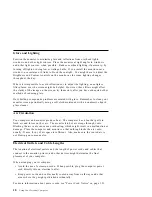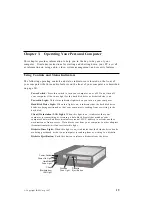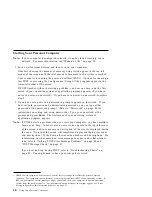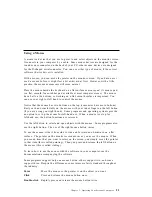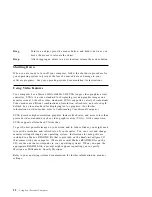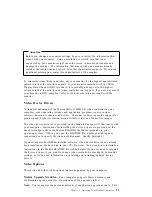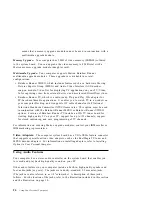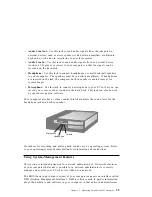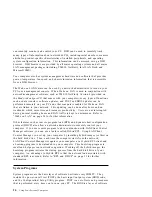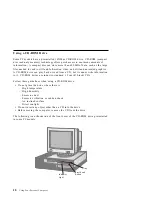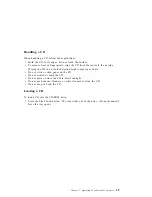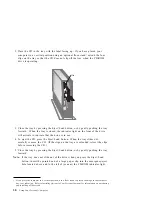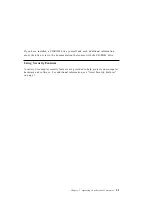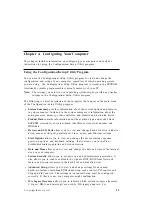
Starting Your Personal Computer
Note:
If your computer is configured correctly, it can be started remotely over a
network. For more information, see “Wake on LAN” on page 54.
1. Turn on all external devices, and then turn on your computer.
Numbers showing the amount of memory being tested appear in the top-left
corner of the screen until the total amount of memory in the system is reached.
Your computer is running the power-on self-test (POST). Options for running a
fast POST or accessing the Configuration/Setup Utility program appear in the
lower-left corner of the screen.
If POST finishes without detecting a problem, you hear one beep, and the first
screen of your operating system or application program appears
6
(if you have
not set a power-on password). If you have set a power-on password, complete
step 2.
2. If you have set a power-on password, a prompt appears on the screen. If you
have set both power-on and administrator passwords, you can type either
password at the password prompt. (Refer to “Passwords” on page 40 for
instructions on setting and using passwords.) Type your password at the
prompt and press Enter. The first screen of your operating system or
application program appears.
Note:
If POST detects a problem when you start your computer, you hear multiple
beeps or no beep. In most cases, an error code appears in the top-left corner
of the screen, and in some cases a description of the error is displayed beside
the code. (Note that the screen will sometimes display multiple error codes
and descriptions.) Write down all error code numbers and descriptions. For
information on what caused an error message to appear and what action to
take, refer to “Solving POST Error Message Problems” on page 64 and
“POST Message Charts” on page 67.
If you hear no beep during POST, refer to “Troubleshooting Charts” on
page 85. You might need to have your computer serviced.
6
IBM PCs with integrated Etnernet have special factory settings that affect the primary startup
sequence. The computer tries to perform a remote program load (RPL) of the operating system. If
RPL is unsuccessful, several messages might appear and then your computer loads the operating
system from the hard disk drive. For information on the messages that might appear, see “Error
Messages Specific to the Integrated Ethernet” on page 97.
20
Using Your Personal Computer
Summary of Contents for PC 300PL Types 6862
Page 1: ...Personal Computer Using Your Personal Computer PC 300PL...
Page 2: ......
Page 3: ...Personal Computer Using Your Personal Computer PC 300PL IBM...
Page 12: ...x Using Your Personal Computer...
Page 46: ...32 Using Your Personal Computer...
Page 70: ...56 Using Your Personal Computer...
Page 145: ......
Page 146: ...IBM Part Number 06J0871 Printed in U S A July 1997 6J 871...













